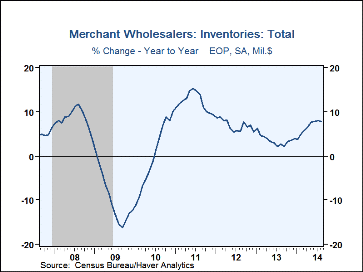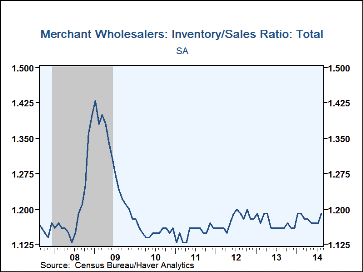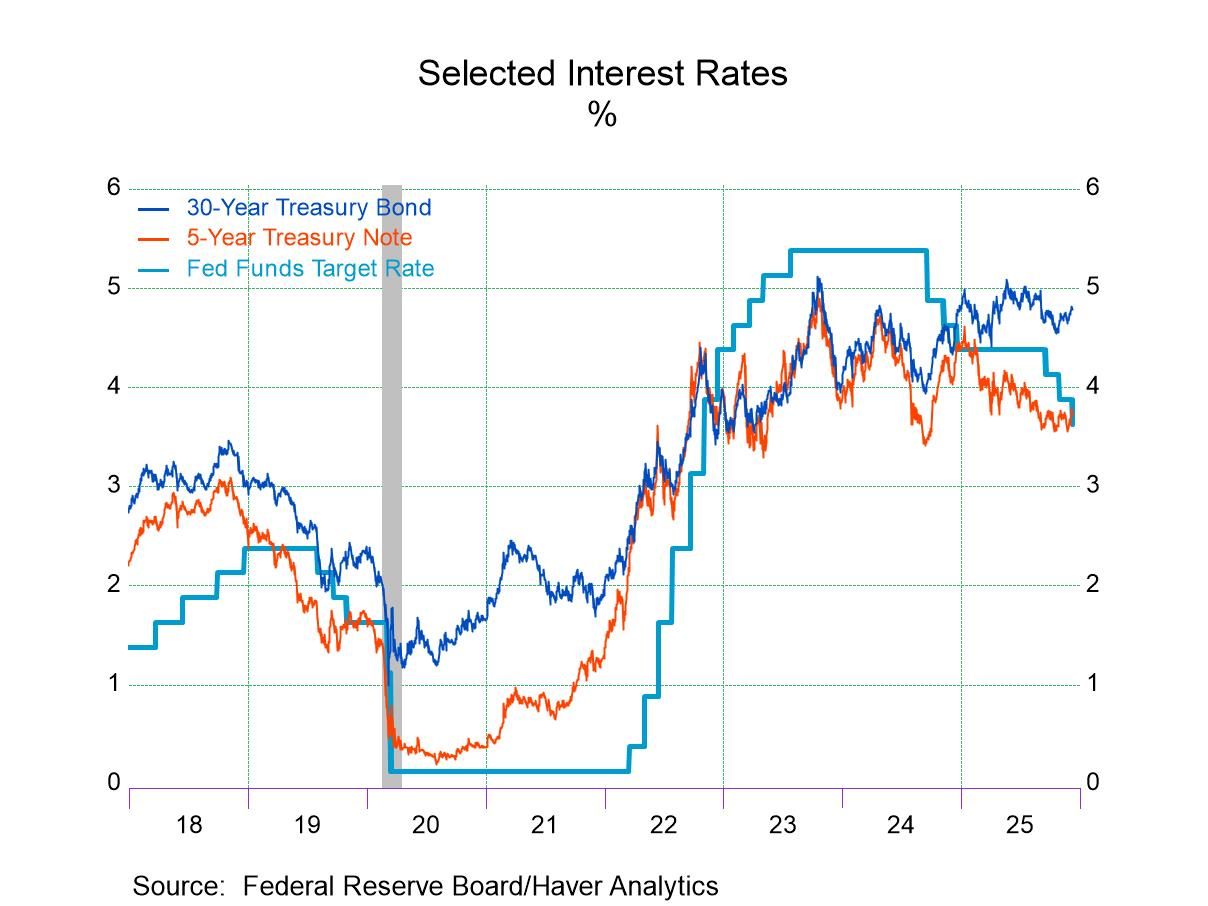 Global| Oct 09 2014
Global| Oct 09 2014U.S. Wholesale Inventories Post Broad-Based Strength
by:Tom Moeller
|in:Economy in Brief
Summary
Inventories in the wholesale sector increased 0.7% (7.9% y/y) during August, the strongest rise since April. Quicker inventory building stretched across industry sectors. Durable goods inventories grew 0.8% (8.5% y/y) paced by a 4.5% [...]
 Inventories in the wholesale sector increased 0.7% (7.9%
y/y) during August, the strongest rise since April. Quicker inventory building
stretched across industry sectors. Durable goods inventories grew 0.8% (8.5%
y/y) paced by a 4.5% jump (13.6% y/y) in computer equipment. Construction
materials gained 1.5% (8.7% y/y) and electrical equipment inventories increased
1.1% (7.2% y/y). Motor vehicle & parts rose a lesser 0.6% (8.3% y/y) but
metals slipped 0.1% (+8.6% y/y), down for the second straight month. Amongst
nondurable goods industries, inventories gained 0.5% (6.9% y/y) following three
straight months of decline or stability. Apparel inventories jumped 0.7% (11.0%
y/y) while farm products surged 1.0% (4.8% y/y). These gains were offset by a
2.6% decline (+2.8% y/y) in chemicals and a 1.8% drop (+3.0% y/y) in paper. The
value of petroleum inventories rose 0.5% but declined 9.0% y/y.
Inventories in the wholesale sector increased 0.7% (7.9%
y/y) during August, the strongest rise since April. Quicker inventory building
stretched across industry sectors. Durable goods inventories grew 0.8% (8.5%
y/y) paced by a 4.5% jump (13.6% y/y) in computer equipment. Construction
materials gained 1.5% (8.7% y/y) and electrical equipment inventories increased
1.1% (7.2% y/y). Motor vehicle & parts rose a lesser 0.6% (8.3% y/y) but
metals slipped 0.1% (+8.6% y/y), down for the second straight month. Amongst
nondurable goods industries, inventories gained 0.5% (6.9% y/y) following three
straight months of decline or stability. Apparel inventories jumped 0.7% (11.0%
y/y) while farm products surged 1.0% (4.8% y/y). These gains were offset by a
2.6% decline (+2.8% y/y) in chemicals and a 1.8% drop (+3.0% y/y) in paper. The
value of petroleum inventories rose 0.5% but declined 9.0% y/y.
Sales at the wholesale level declined 0.7% (+5.8% y/y) in August, the first decline since January. Durable goods sales notched 0.1% higher (+7.0% y/y) but that was held back by declines in several industry categories. Computer sales dropped 1.7% (-0.3% y/y), electrical equipment sales fell 0.5% (+3.2% y/y) and motor vehicles also fell 0.5% (+10.3% y/y). In the nondurables goods area, sales declined 1.3% (+4.7% y/y), led by a 4.2% drop (+0.9% y/y) in petroleum. Farm product sales fell 3.8% (-5.6% y/y), the third straight month of sharp decline. These declines were offset by a 3.4% rise (13.4% y/y) in apparel sales.
The inventory to sales ratio improved to 1.19, the highest level in six months. The ratio for durable goods wholesalers rose to 1.58, the highest level in three months. The ratio in motor vehicles rose to 1.57 but for computer equipment it was only 0.84. In the nondurable area, the comparatively lower ratio of 0.84 represented a 0.32 ratio in petroleum and 0.63 for groceries. In apparel industries, the ratio was a comparatively higher 1.96 and in chemicals it was 1.11.
The wholesale trade figures are available in Haver's USECON database.
Hidden Value: How Consumer Learning Boosts Output from the Federal Reserve Bank of Philadelphia is available here.
| Wholesale Sector - NAICS Classification (%) | Aug | Jul | Jun | Y/Y | 2013 | 2012 | 2011 |
|---|---|---|---|---|---|---|---|
| Inventories | 0.7 | 0.3 | 0.2 | 7.9 | 4.0 | 5.5 | 9.4 |
| Sales | -0.7 | 0.4 | 0.4 | 5,8 | 4.2 | 4.8 | 12.4 |
| I/S Ratio | 1.19 | 1.17 | 1.17 | 1.16 (Aug'13) | 1.17 | 1.18 | 1.15 |
Tom Moeller
AuthorMore in Author Profile »Prior to joining Haver Analytics in 2000, Mr. Moeller worked as the Economist at Chancellor Capital Management from 1985 to 1999. There, he developed comprehensive economic forecasts and interpreted economic data for equity and fixed income portfolio managers. Also at Chancellor, Mr. Moeller worked as an equity analyst and was responsible for researching and rating companies in the economically sensitive automobile and housing industries for investment in Chancellor’s equity portfolio. Prior to joining Chancellor, Mr. Moeller was an Economist at Citibank from 1979 to 1984. He also analyzed pricing behavior in the metals industry for the Council on Wage and Price Stability in Washington, D.C. In 1999, Mr. Moeller received the award for most accurate forecast from the Forecasters' Club of New York. From 1990 to 1992 he was President of the New York Association for Business Economists. Mr. Moeller earned an M.B.A. in Finance from Fordham University, where he graduated in 1987. He holds a Bachelor of Arts in Economics from George Washington University.








